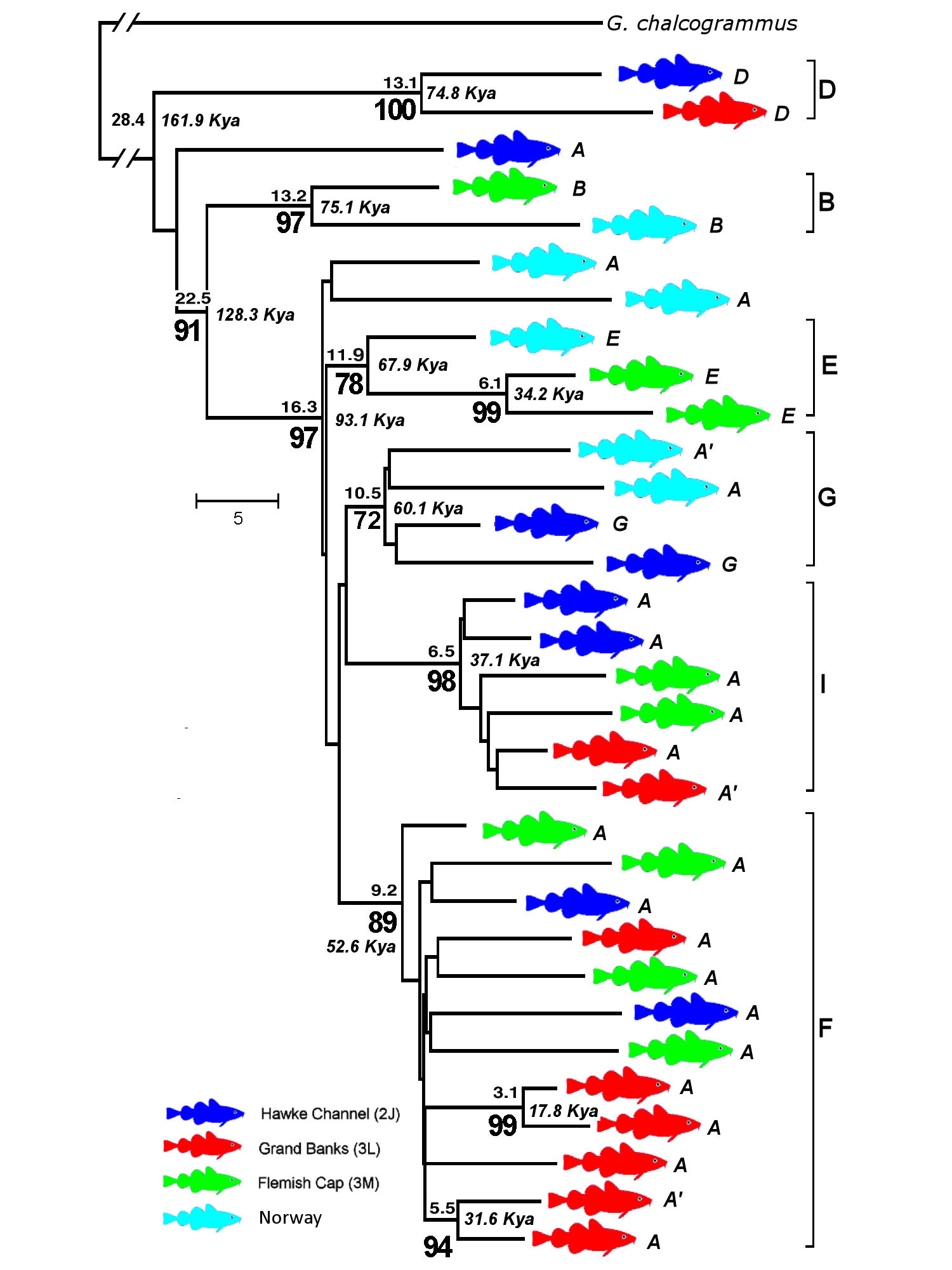
mtDNA Genome Phylogeography of Atlantic Cod

mtDNA Genome Phylogeography of
Atlantic Cod
(SM Carr & HD Marshall 2008. Genetics 108: 381-389)
Atlantic Cod
(Gadus morhua)
spawn in a variety of inshore and offshore areas along the
continental
shelf of Newfoundland and Labrador, including populations in the
"Northern
Cod" stock
complex on and off
the Grand Banks, and at Flemish Cap,
an offshore seamount. Populations numbers of Northern Cod have
declined
more than 99% since the 1970s. Despite closure of the fishery,
numbers
have not recovered. An understanding of the spatial
scale and
magnitude of genetic differentiation among stock areas is
crucial
to management.
On
the basis of multiple complete mitochondrial DNA genome sequences, we
describe
the temporal phylogeography of Atlantic cod from four
spawning
aggregations from the northwest Atlantic and Norway. Every
fish
has a unique mtDNA sequence.
Phylogenetic
analysis identifies six
major haplogroups that range in age from 37 to 75 KYA.
The
widespread haplotype identified by previous single-locus
analyses at
the center of a ‘‘star
phylogeny’’
is shown to be a paraphyletic assemblage of genome lineages. The coalescent that includes all
cod occurs
162 KYA. The most basal clade comprises two fish from
the
western Atlantic. The most
recent
superclade that includes all fish examined from Norway dates
to 128 KYA
at the Sangamon / Würm interglacial, when ocean
depths on
continental shelves would have favored transcontinental
movement. The
pairwise mismatch distribution dates population
expansion of this superclade to the middle of the Wisconsinan
/
Weichsel glaciation 59 KYA, rather than to a
postglacial
emergence from a marine refugium 12 KYA, or to more recent
historic
events.